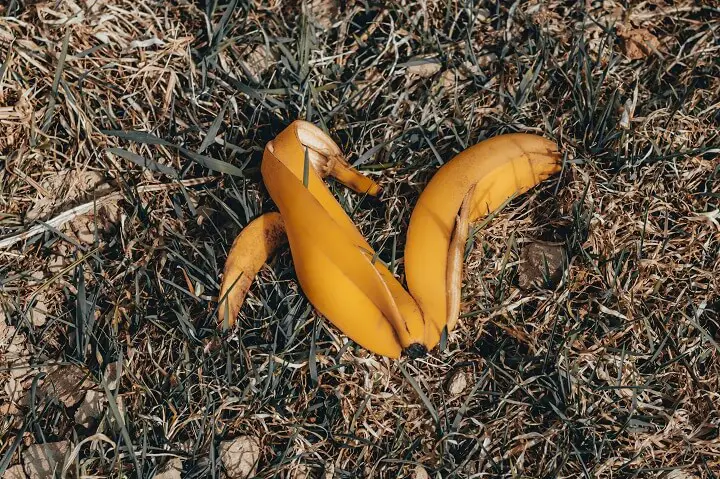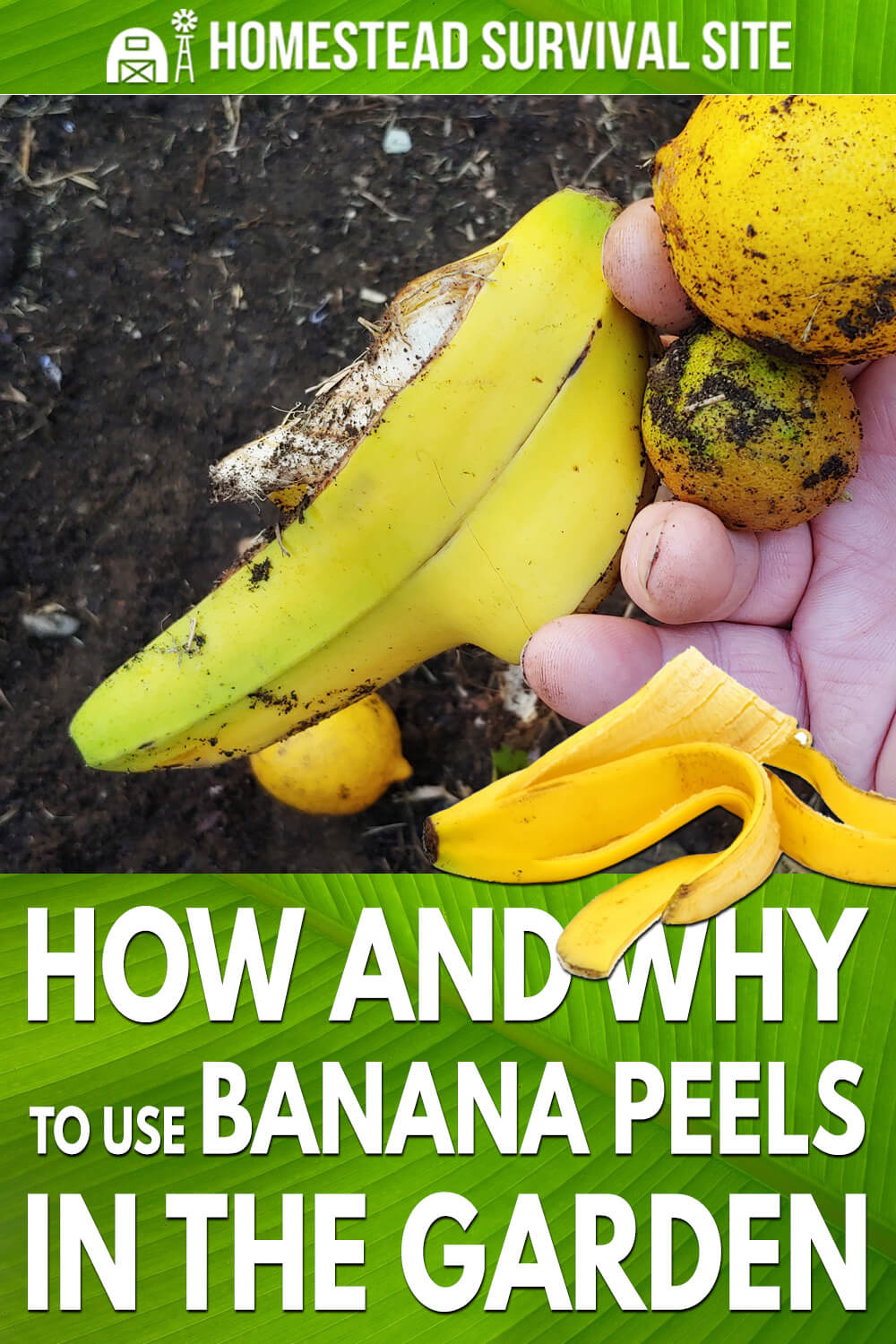Estimated reading time: 6 minutes
While banana peels on the ground can be a slipping hazard, they also provide some much-needed nutrients to plants. There are a variety of ways to use banana peels to help aid the growth of your homestead. As a natural source of potassium, banana peels help to provide an added boost of nutrients to support plant growth.
In general, bananas are one of the most cost-effective fruits to buy at the supermarket. They usually only cost about 20 cents per pound and have a wealth of benefits far after you consume the fruit.
Want to save this post for later? Click Here to Pin It On Pinterest!
Many American households today purchase and eat plenty of bananas without ever considering the benefits of the peels. In fact, the average American eats about 27 pounds of bananas each year!
Instead of throwing the peels in the garbage, consider rethinking the use of those peels for the good of the homestead. Learn more about why to use banana peels in the garden, and different ways to do so this year:
Why Bananas Are Good For The Garden
Simply put, bananas are good for the garden thanks to their potassium content and variety of uses.
High Potassium Content
Potassium is a much-needed component in fertilizer as part of the N-P-K rating. Adding potassium nutrients to your garden without the use of chemicals is always a plus.
The average banana has about 400 milligrams of potassium, while the peel itself has about 75 milligrams. Adding potassium to your garden using fruit leftovers is a great and natural way to make use of the entire fruit.
Free Fertilizer Resource
Tending a large garden can be a significant expense. Many homesteaders rely on unique ways to provide for the land without having to spend a lot of money.
Creating your own banana peel fertilizer is a great way to add nutrients to the garden for free. While many of us can’t grow bananas at home, we can fully use the entire banana to help strengthen the homestead.

Decomposed Nutrients
Many homesteaders add banana peels to their compost piles. Along with other kinds of kitchen scraps, banana peels decompose well and provide a natural amount of nutrients.
Adding banana peels along with other peelings from the kitchen like cucumber, squash, and carrot peelings all add valuable nutrients to the compost. Even larger peelings, like watermelon rinds, can add to the banana peelings to create a unique blend of useful energy to the garden.
How To Use Bananas In The Garden
There are many ways to use banana peels in the garden. The sheer variety of uses that a banana peel provides is one of the main benefits of the fruit.
Make Banana Peel Compost Tea
While we do know of people who eat banana peels, this banana peel tea is meant more as a liquid fertilizer for plants.
Cut up a banana peel into small sections and allow it to sit in a jar of water for a few days. The nutrients in the peel will leach out into the water creating a nutrient-rich liquid. Strain the skins from the water and use the liquid to water your indoor and outdoor plants.
Some homesteaders like to blend the peels with water before straining, but it isn’t necessary if you have the time to allow the jar to sit for a few days.
Use As A Soil Additive
Another way to use banana peels is to cut them up into segments that are a few inches long. Adding these to the soil of the garden is a great way to jump-start the nutrient supply of the dirt.
Consider adding banana peels directly to the garden in early spring when you are preparing the beds for planting. Burying banana peels too close to seedlings or root systems can burn the plants by providing too much potassium in a small area.
You can also use dried banana peels to create larger blooms and fruits as well.
Cut Down On Flies
Warm days often bring sunny skies but also the growing population of pesky flies. Create a non-toxic flycatcher by adding small pieces of banana peels to apple cider vinegar.
Adding the mixture to a lidded jar with small holes will attract insects and trap them inside. Banana peel cider traps are also great to use within the home to catch fruit flies as well.
Control Aphid Population
Some homesteaders prevent aphids from attacking individual plants in the garden by burying banana peels under the soil. Draping ripe banana peels directly on plant branches is another option to help keep aphids from destroying certain plants. It is believed that the aroma of the rotting banana peel wards off aphids.
However, doing so can also attract other insects to the plant that wouldn’t be there otherwise. Sprinkling banana peel pieces on top of the garden soil may be easier, but it is likely to attract unwanted pests in the garden as well.
Help Decay The Compost Pile
Bananas are notorious for ripening quickly and then rotting while still on your countertop. More humid areas of the country, like the Midwest, have trouble keeping bananas edible within just a few hours of coming home from the store.
While it can be frustrating, this quick decaying process can be super beneficial to the compost pile. Adding banana peels directly to the pile will help speed along the decaying process of other items as well.
The decayed skins will invite enzymes and insects to work their magic as well as add nutrients to the overall compost content. Some homesteaders like to cut up the peels to help speed along the process, but the peels should decompose rather quickly as a whole.
While it is true that many Americans love bananas, the fact is that plenty of banana peels are being thrown away instead of getting put to use in the garden.
Consider using your leftover banana peels to help add instant nutrients to plants on the homestead and dissuade critters from eating your garden. Add the peels to compost piles to break down into nutrients for next year’s crop as well.
Like this post? Don't Forget to Pin It On Pinterest!










I would LOVE to have the links for POSTS, not youtube videos. I don’t like youtube.